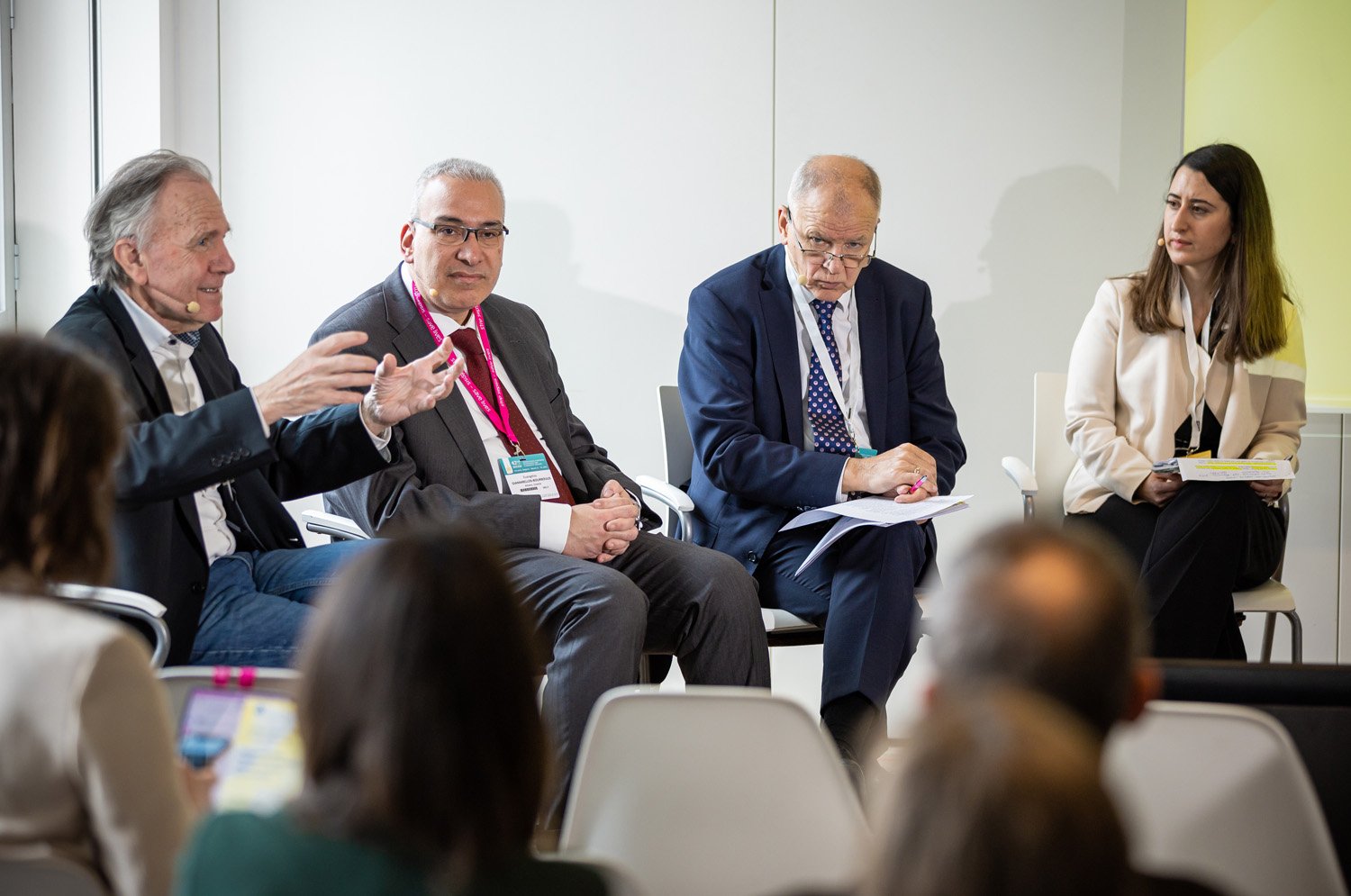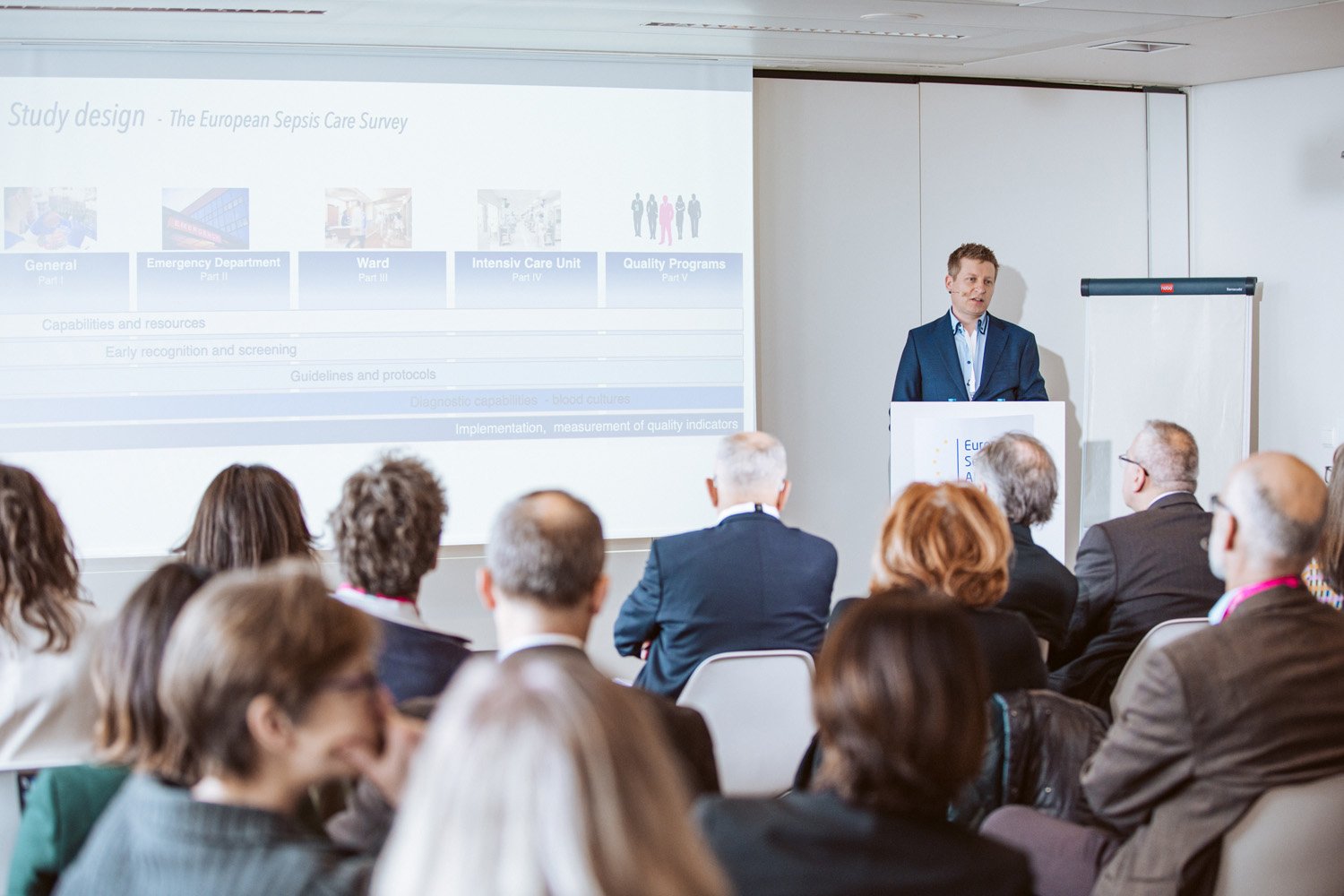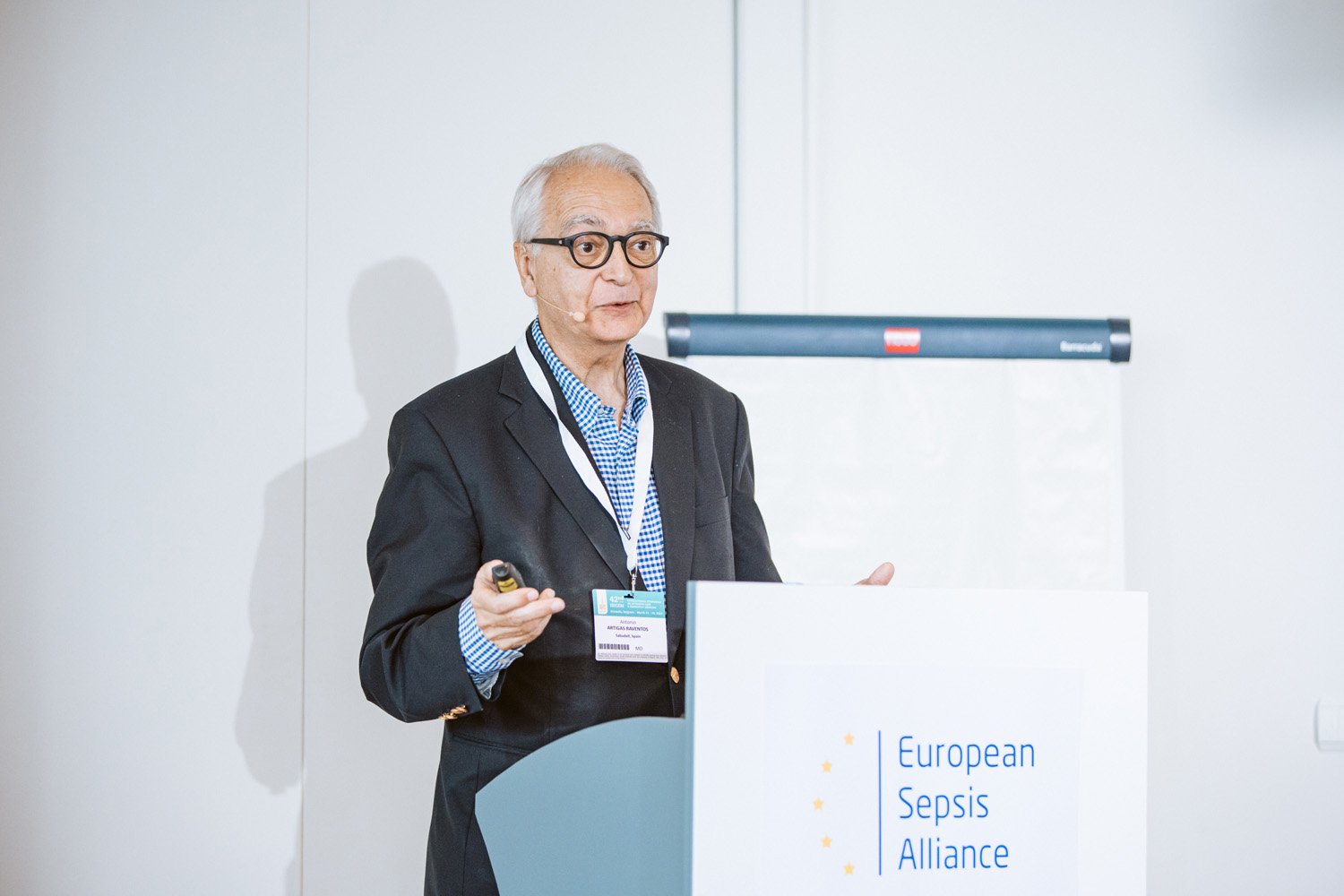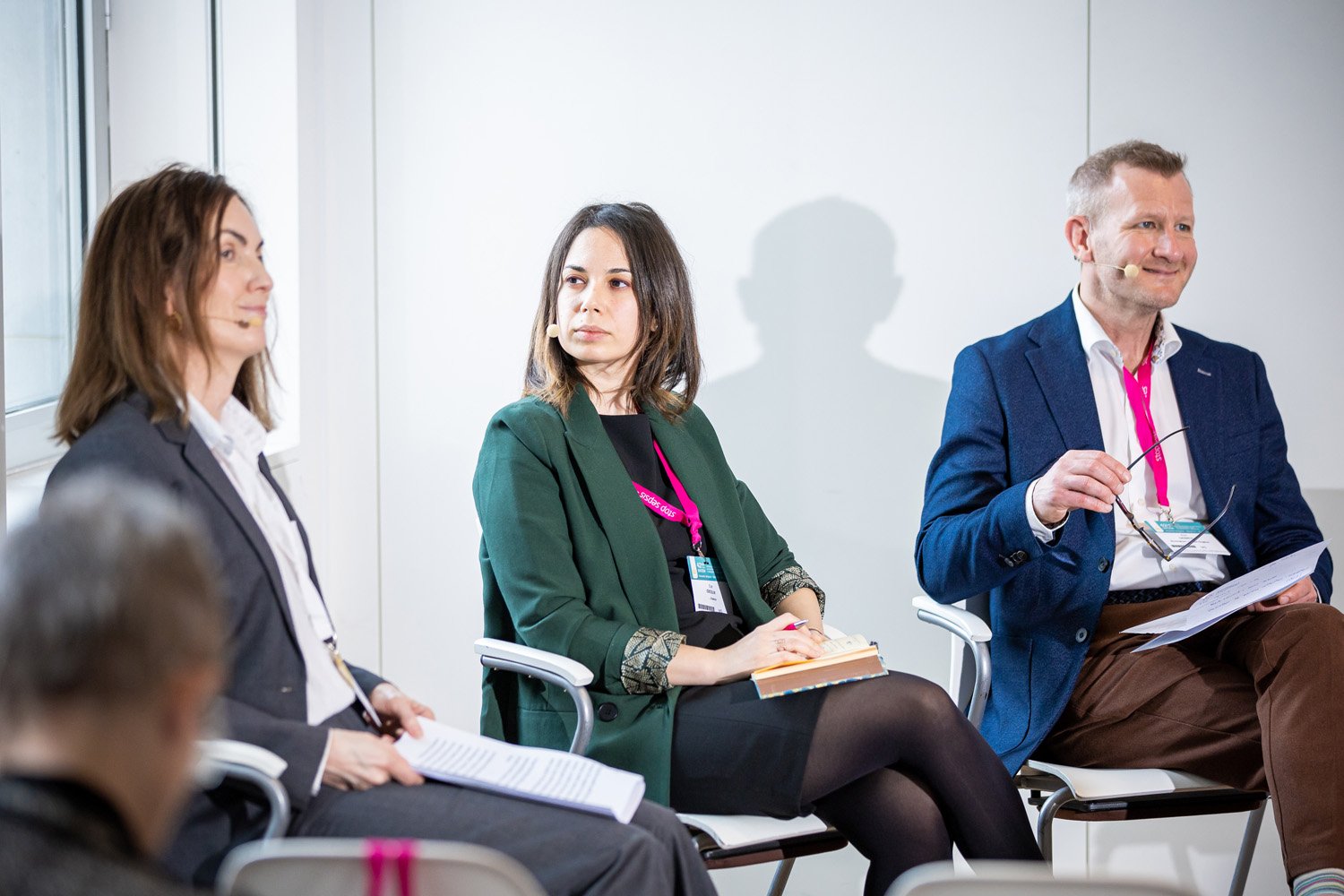Summary and recording of the 6th Annual Meeting: ESA Urges European Governments and Institutions to Act
E. Giamarellos
At the 6th ESA Annual Meeting that took place in Brussels on 21 March, ESA Chair Evangelos Giamarellos called on national and European institutions and authorities to help improve sepsis care in Europe via a list of actions pertaining to their responsibilities. The call, available here and via the button below, asks for concrete measures to support research, awareness, education, quality improvement, antimicrobial stewardship, support for survivors and political focus on sepsis. The ESA calls on other organisations to join the call.
K. Björkqvist
The day started with the story of Kristina Björkqvist. She had sepsis twice, once in 2007 and another time in 2016 that affected her more severely and from which she still suffers the long-term consequences. Kristina shared her experience and her work on engaging with other sepsis survivors that brought them to set up a Swedish patient association.
K. Reinhart, E. Giamarellos, V. Andriukaitis, H. Beton.
Education, data, impact measurement and collaboration are the words coming out of a beautiful day of discussions, learnings and togetherness. We were honoured to host former European Commissioner for Health and Food Safety, and now WHO Special Envoy for Europe, Vytenis Andriukaitis. He shared his unique passion for improving health for all Europeans. When asked what can be done to improve sepsis awareness and quality of care, he is sure that communication towards policymakers and media must be intensified, also in relation to the current global health threats and policy priorities, such as AMR, infectious diseases, cancer, with which sepsis has strong links. ESA Chair Evangelos Giamarellos insisted on the importance of education, both towards the public, but most importantly for healthcare professionals. Moderator Hatice Beton questioned the panellists on the potential benefits that digitalisations could bring to sepsis care. Speakers agreed that better data collection thanks to technology is key, but it must be accompanied by the will and the resources to use those data to really improve patent care. GSA founder and past president, Konrad Reinhart described the challenges to correctly communicate about sepsis, especially by policymakers. He closed the first panel with an optimistic note. He reminded of the huge progress made so far by sepsis advocacy, and he stressed that more needs to be done, also by breaking silos and unite with other advocacy groups and organisations.
C. Scheer
The picture of the quality of sepsis care is not the brightest. Procedures for early recognition are not sufficiently widespread. The offer of microbiological laboratory services is too often time limited, which causes significant delay in pathogen identification and therefore in effective treatment. Overall, quality improvement initiatives do not follow a structural path. These are the conclusions of the European Sepsis Care Survey, conducted by Christian Scheer, covering more than 1000 hospitals in Europe. Conclusions mirrored somehow also by the European Sepsis Report, updated in occasion of the event, that shows that in only 11 European countries there are ongoing initiatives on sepsis, of which only four are government-led national sepsis plans.
A. Artigas
L. Schlapbach
The programme looked at specific issues related to two of the most vulnerable groups: elderly and children. The presentation of Antonio Artigas illustrated the challenges that an ageing population brings to sepsis management. Elderly patients are more vulnerable to sepsis due to several factors, including their unique vascular system and the fact that they often receive other treatments and medications. Sepsis symptoms are also different by the elderly. Luregn Schlapbach instead explained how difficult it is to detect sepsis in children, because of their incapacity to communicate deterioration, and the lack of focus on children in currently ongoing national sepsis plans in Europe. In this context, parents participation in discussions and in the clinical management of small sepsis patients is paramount.
K. Björkqvist, E. Ozcelik, R. Daniels
However, data show that sepsis is not a prerogative of one or the other population group, shared Ron Daniels, UK Sepsis Trust CEO and GSA Vice President, who moderated the final panel, which drew parallels between sepsis and COVID-19, in terms of impact on the health systems and on people. Because of the lack of available data, OECD’s work does not focus on sepsis. However, the data shared by Ece Ozcelik on the impact of infectious diseases and AMR on the G7 economies are impressive: AMR is costing every year twice as much the cost of HIV treatment, and these figures are deemed to increase. The impact of the pandemic was big for patients and for family doctors. Thiago Villanueva highlighted the need for GPs to be prepared to deal with emergency situations. Integrating point of care diagnostic tools into clinical systems is key to help GPs identify pathogens and provide the right therapy, be it for sepsis or other conditions. As often argued by ESA, the impact of COVID-19 on the sepsis burden is significant, considering that the vast majority of ICU-treated COVID-19 cases presented a viral sepsis. However, because of recent changes in the ICD coding system, it was impossible to record those cases as sepsis, argued Caroline Fleischmann, from the Jena University Hospital. Her study from 2021 also looked at the heavy long-term consequences of sepsis: within the twelve months following sepsis, 3/4 of patients require care for conditions that they did not have before and 1/3 cannot return to work within the same period. Participants raised the point on the need to focus on rehabilitation of patients, as the extended economic impact on the society can be huge. Kristina wished for clinical hubs where patients can receive appropriate support from trained professionals, similarly to what is being set up for long Covid. Of course, this might come with a cost, but it should rather be seen as an investment, because, as it was rightly pointed out, the cost of non-action can be far bigger.
In this regard, the event moderator Ulrika Knutsson announced plans by ESA to run an economic impact assessment study and asked supporters to get in touch as we are seeking funding for this project.
Recording of the Event
Sponsors
NB: Sponsors do not influence in any way the content of the event.
